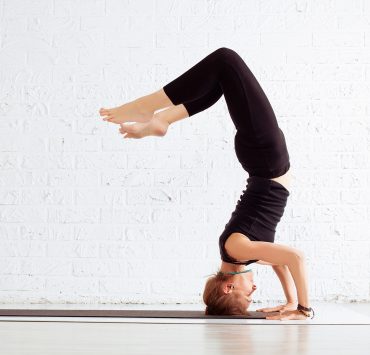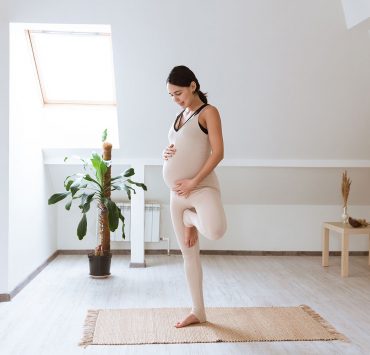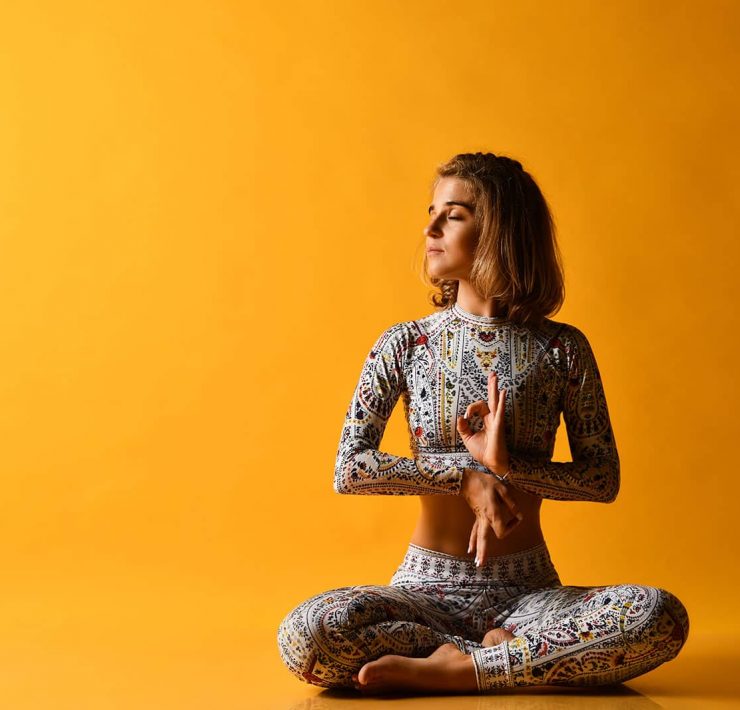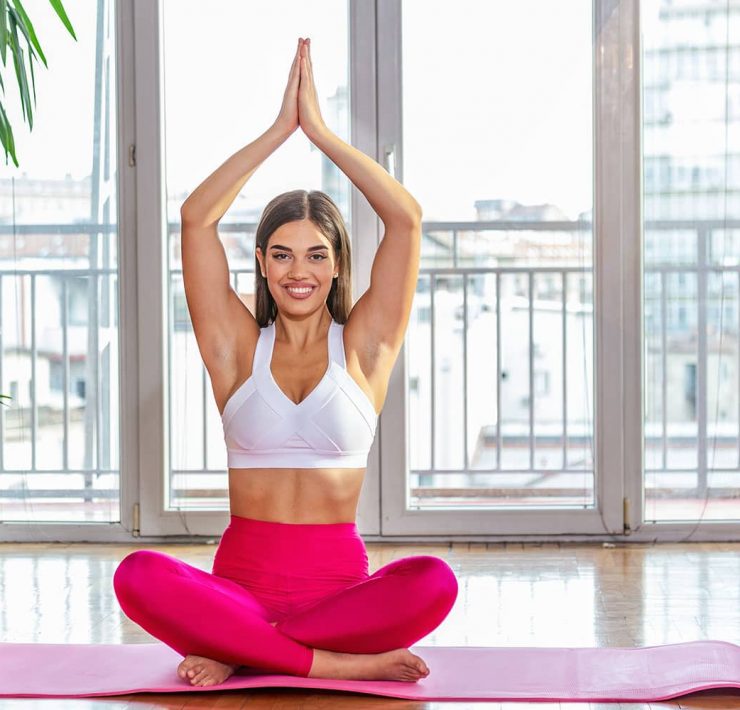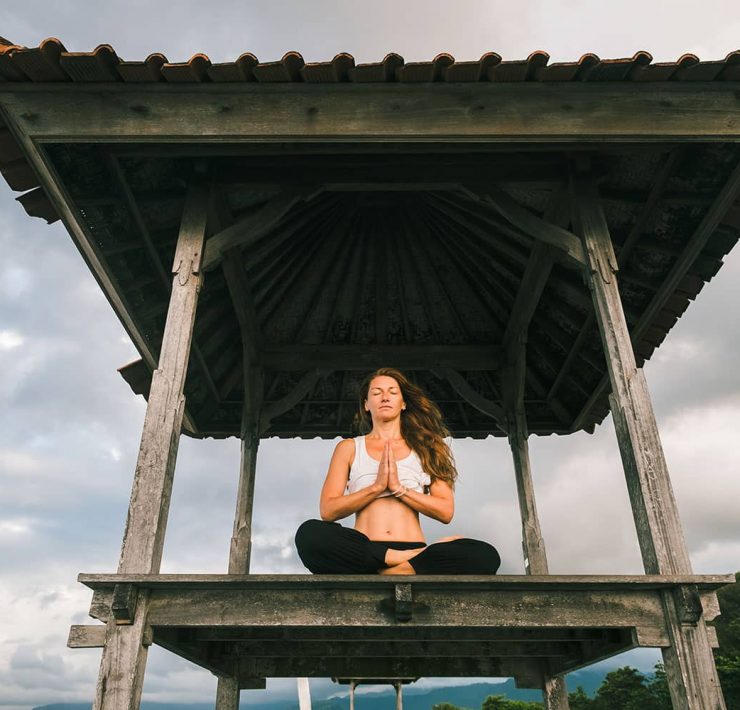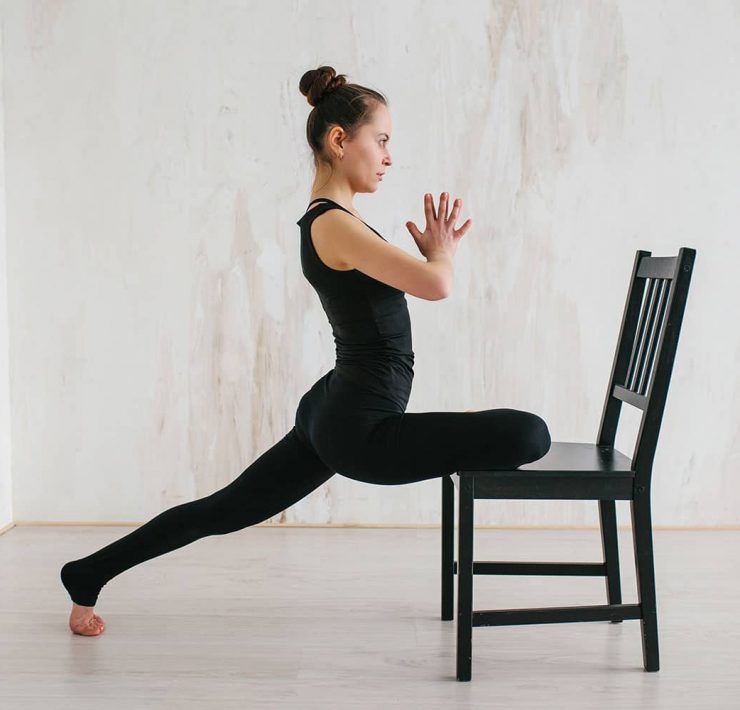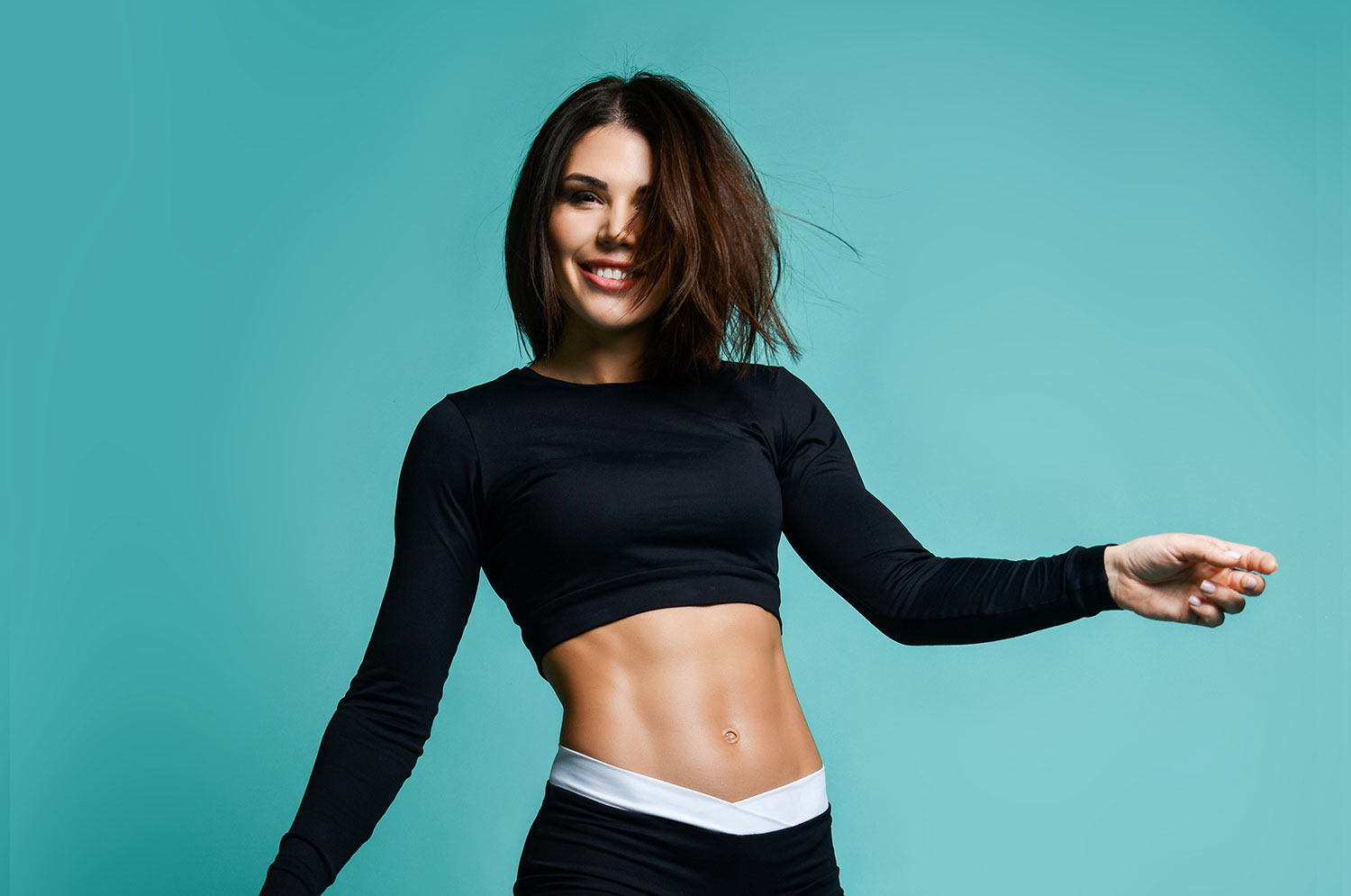
Yoga, meditation, and spirituality are at the top of the…
When you think of weight loss exercises, yoga probably isn’t the first thing that comes to mind. For most people, running, CrossFit, pilates, or any number of other activities are probably higher on the list than yoga. There is a misconception that yoga is too gentle to have any major effects on weight, but that couldn’t be further from the truth. Yoga has substantial, transformative benefits for both the physical body and mental state that can help people successfully lose weight and keep it off.
The Types of Yoga that are Best for Weight Loss

While any style of yoga can help with weight loss to some degree, certain types of yoga are more effective in shedding extra pounds. Naturally, the best yoga for weight loss are the more active styles. Vinyasa, Ashtanga, Bikram, and Power yoga all offer more intense movements that can scorch calories at an effective rate. Fusion classes, such as a Vinyasa style class with strength training through the use of hand weights, can also be excellent for weight loss. Many people also find success using hot yoga for weight loss.
While each of these styles have their own unique method, the common thread found in these classes is that they focus on strength and cardiovascular fitness, which aid with weight loss. Most studios offer at least one of these popular styles, so it should be easy to find a class near you that aligns with your fitness goals.
While these active styles can be great for losing weight, restorative yoga can actually be beneficial for weight loss in its own right. A 2013 study found that overweight women were able to lose more weight, including abdominal fat, through a consistent restorative yoga practice, compared to a group that solely did stretching. This proves that anyone can turn to any style of yoga for weight loss, even if they opt for the more gentle forms of the practice.
The Mind-Body Connection

In addition to the physical side of the practice, the inner-awareness and connection to the body that is strengthened in the yoga class offers a variety of benefits that can directly and indirectly affect weight. With a consistent yoga practice, you become kinder to your body and make healthier choices that can help you lose and maintain your weight.
Perhaps the most direct effect is that yoga has been found to encourage healthier eating habits. In 2016, researchers found that the mindfulness that is developed through a yoga practice helps practitioners become more in tune with their body and be more aware of when they are full and don’t need to eat anymore. It also helps them make healthier choices when it comes to food, and resist eating purely for comfort or entertainment. Another study in 2017 expanded on this, showing that yoga has short-term benefits in terms of resisting impulse or binge eating.
More indirectly, yoga can help practitioners get a better quality night’s sleep. A good night’s sleep has been found to help with weight loss.
The stress-reduction benefits that come along with a consistent yoga practice also help with weight loss and managing weight. Yoga can lower your stress levels by reducing levels of cortisol, which is known as the stress hormone. Cortisol can be responsible for weight gain, so by reducing the levels of this stress hormone, you are fighting the weight gain effects.
Poses that Help with Weight Loss
In order to get the full benefits of yoga in regards to mindfulness, stress-reduction, better sleep, and more, it is best to go to a class or do your own at-home practice. However, if you want to focus in on asanas that specifically target weight loss, you can incorporate these into your practice, or do them individually as part of your workout routine.
Navasana — Boat Pose

Boat Pose, or Navasana, works deeply into the abdominal muscles, as well as the hip flexors and back. It also stimulates the kidneys and helps to improve digestion.
Instructions:
Start seated with your legs out in front of you. Place your hands behind your thighs as you bend your knees, keeping your legs together and bringing your feet closer towards your glutes. Your toes should remain on the ground, but the rest of your foot should hover above your mat. Slightly lean your torso back, until you feel your core muscles engage.
Keep an elongated spine in the posture, and avoid hunching forward. If you want to take the pose further, begin by lifting one leg and then the other off the ground, creating a ‘V’ shape with your body. You can then let go of the backs of your legs, extending your arms out in front of you.
Ensure you are still keeping an elongated spine in this layer of the posture. Find your balance on your sits bones, and continue to breathe in this posture for about 20 to 30 seconds. Release on an exhale, grabbing hold of the back of your thighs and placing your feet on the ground.
Phalakasana — Plank Pose

Plank Pose, or Phalakasana, is considered a more effective abdominal workout than crunches or sit-ups, as it activates the entire torso, from your hips to your shoulders, rather than solely your lower abs. As an added bonus, it doesn’t only workout your abdominals, but it also engages your arms, legs, back, and spine.
Instructions:
Begin in a table top position on your hands and knees. Your wrists should be stacked underneath your shoulders and your knees underneath your hips. Your palms should press firmly into the mat.
Tuck your toes and step your legs back, so that you are in a straight line from your head to your heels. Your neck should be active but relaxed, with your gaze down at the mat.
Bring awareness to your hips, and make sure they are in line with your body, rather than sinking or coming up too high. Ensure that your shoulders are still stacked over your wrists, and focus on pressing through the thumb and index fingers.
Continue to press your thighs up towards the ceiling, while still maintaining a straight line, and drive your tailbone towards your heels.
Try holding for at least 30 seconds, but hold for longer if possible to build up more strength and stamina. To release, carefully lower back down to your knees.
Sarvangasana — Shoulder Stand Pose

Shoulder Stand Pose, or Sarvangasana, can balance the thyroid levels and improve digestion, while also strengthening the core and legs. It is also great for fighting insomnia, since the inversion sends blood to the brain and calms the mind.
Instructions:
Start laying on your back with your knees bent and feet close to your glutes. Place your arms along the side of your body, with your palms pressing into the ground. On an exhale, push your feet off the floor and bring your thighs towards your torso. Continue to bring your knees towards your face while lifting your back off the ground.
Keep your upper arms pressing into the ground, but bend at your elbows to bring your palms to your lower back to provide support. Ensure the upper arms remain at shoulder width distance on the ground. Continue to lift your pelvis up so that your upper torso moves towards becoming perpendicular to the ground.
On an inhale, begin to slowly straighten the knees, with the balls of your feet pressing towards the ceiling. Ensure your core is engaged as you do this. Once you have straightened your legs, ensure your shoulders blades are firm against your back, and that your gaze is towards your chest. While in this posture, avoid turning your head, as it can cause injury. Hold the position for 30 seconds or longer, and then slowly roll back down with bent knees.
If it is uncomfortable resting your shoulders on the mat, you can modify with a blanket or two. Place the folded blanket at the top of your mat, and lie back onto the cushioning, ensuring your head and shoulders are both on it.
Dhanurasana — Bow Pose

Bow Pose, or Dhanurasana, massages the abdominal organs and improves digestion, while also strengthening the back, chest, and thighs.
Instructions:
Start by laying on your stomach. Bend your knees and bring your heels towards your glutes. Reach back for your outer ankles, with your palms facing in. Actively drive your ankles up and towards your head, while simultaneously lifting your head and heart towards the ceiling and back towards your toes.
Hold this pose for 20 to 30 seconds, while focusing on keeping your feet and ankles touching, and shoulders away from you ears. Gently let go of your ankles and slowly release back down to your stomach.
Parivrtta Utkatasana — Revolved Chair Pose

Revolved Chair Pose, or Parivrtta Utkatasana, works the legs and the core. The twisting movement in the pose also helps to stimulate the digestive system.
Instructions:
Begin in Chair Pose, with your knees deeply bent, your arms stretched out alongside your ears, and your spine elongated. Bring your hands to prayer at your chest on an inhale, and then on an exhale, begin to twist your torso over to the right. Bring your left elbow on the outside of your right knee, with your right elbow pointing up. Keep your hands in prayer position at the center of your chest.
Continue to extend through the spine on each inhale, and then twist further to the right on each exhale. Remain in the pose for 30 seconds, and then release back to Chair Pose. Repeat on the left side.
Virabhadrasana II — Warrior II Pose

Warrior II, or Virabhadrasana II, helps to build stamina while strengthening the legs, core, and arms.
Instructions:
Begin standing facing the side of the room, with the outer edge of your left foot paralleling the front edge of your mat. Step your feet about three and a half to four feet apart, keeping them aligned.
Turn your left toes about 90 degrees, so that your toes are pointing towards the top of the mat. Turn your right toes slightly in, so that they are at a 45 degree angle.
Lift your arms up to shoulder height, with your left arm pointing forward and right arm pointing back. Your palms should be facing down, and your arms should be engaged.
On an exhale, bend into your left knee, working towards creating a 90 degree angle with your shin perpendicular to the floor and your thigh parallel. Your knee should align directly over your left ankle. Adjust your foot positioning as necessary.
Your hips should be squared towards the side of the room, and your gaze should be in front towards your left finger tips. Push through the outer edge of your right foot, and ensure that your torso is upright and not leaning forward. Bring awareness to your shoulders, ensuring they are not creeping up towards your ears.
Virabhadrasana III — Warrior III Pose

Warrior III, or Virabhadrasana III, focuses on balance and strengthens the core, legs, and arms.
Instructions:
Start in Warrior I, with your right leg in front. On an exhale, begin to shift your weight forward onto your right foot, and lift your left leg off the ground as you straighten your right leg. Work towards bringing your left leg high enough so that it is parallel to the ground.
Your left toes should be facing down, and your hip bones should be on the same plane, both facing forward. Your gaze should be down, as you work towards creating a straight parallel line from the top of your head to your left heel.
There are a few arm options you can take with Warrior III. The full expression requires you to extend your arms straight in front of you at ear level. You can also modify by extending them straight behind you, or bringing them into prayer position at your chest. In the flow below, you will be instructed to do the pose with a chest expansion, but you can take on any arm variation that works best for you.
If you are looking to lose weight, yoga can be a great addition to your physical routine. As a strengthener of both the physical body and mental stamina, it is an excellent choice for anyone who is working on getting in the best shape possible.
What's Your Reaction?
Yoga, meditation, and spirituality are at the top of the list for writer and former nutritionist Amanda Carter. This devoted practitioner enjoys writing about health and wellness just as much as she enjoys living it.






